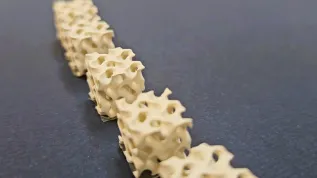
Warsaw is one of the first European cities to implement a pilot installation for recovering heat from the metro with heat pumps to supply the city's heating network.
The pilot project, using heat pumps, aims to improve the city’s energy efficiency and reduce emissions.
Heat recovery from underground metro infrastructure is currently being considered for two metro lines: M2 and the planned M3, Warsaw Metro spokesperson Anna Bartoń told the Polish Press Agency (PAP).
“On the second line, the pilot installation will be installed at the Bemowo station. We are currently in the final stages of processing the agreement between Warsaw Metro and Veolia, with the participation of the City Hall's Infrastructure Office. Design work is underway for the M3 line, and arrangements are also being made for technical solutions regarding the future location of the installation,” Bartońn said.
According to Piotr Ziętek, PhD, from the Faculty of Environmental Engineering at the Warsaw University of Technology, heat recovery from metro infrastructure most often involves using ventilation air from tunnels and metro stations to power air-to-water heat pumps. These devices, via a thermodynamic cycle, can raise the temperature of the extracted heat to a higher level and transfer it to the receiving system.
“Building a system to use heat from ventilation air from the metro to supply nearby buildings is a very complex engineering task, utilizing innovative technologies, such as high-power heat pumps with eco-friendly working fluids. This can contribute to reducing pollutant emissions by reducing the consumption of conventionally generated energy,” Ziętek said.
The he added that solutions are currently being sought to improve the energy efficiency of technical installations, including heat sources, and heat recovery systems can play a significant role in this.
The idea of recovering heat from metros is not yet widespread worldwide, but — as the expert says — its potential has been recognized. “Analysis is underway, and the first pilot and demonstration installations are being built in various countries, including Germany, Scotland, and Poland,” he said.
Referring to an installation using heat from the metro to heat nearby buildings in London, Ziętek said: “The Bunhill 2 Energy Centre utilizes heat from metro tunnels and supplies heat to 1,350 residential buildings and several public buildings.”
In the model being developed in Warsaw, heat generated by operating equipment and ventilation systems in the Warsaw metro will be recovered with heat pumps and directed to the city's district heating network.
“The metro utilizes very large airflows, which are necessary, among other things, to ensure adequate air quality for passengers, but also to absorb heat gains generated by people, trains, and other equipment in stations and tunnels,” Ziętek said.
He added that the air temperature in the metro is relatively stable and high throughout the year — in winter, it rarely drops below 10°C, and in summer, during hot weather, it can exceed 25°C. “This makes the air from the metro an attractive heat source for pumps. Their efficiency and effectiveness increase with the temperature of the lower heat source,” he said.
“Low-temperature heat extracted from the indoor air in the metro is transformed by heat pumps to a higher temperature level and thus becomes usable for heating purposes, for example, for supplementing the municipal heating network,” Ziętek said.
An additional benefit is that, with appropriate distribution, cooled ventilation air can lower the temperature in the metro station, which is especially beneficial during hot summer days.
The authors of the solution in Warsaw say that the technology and method of recovering heat from the metro infrastructure will additionally reduce the temperature on platforms by up to 4 degrees Celsius. According to Ziętek, this temperature is noticeable to metro users. “It should not cause significant discomfort in winter, and in summer it can certainly improve thermal comfort at a given station,” he said.
Warsaw City Hall announced that after the installation of heat pumps in the district of Bemowo, new locations, i.e., metro stations, would be selected, where preparations for the installation and commissioning of further heat recovery systems would begin.
According to Ziętek, this direction is worth pursuing, “provided that the appropriate technical conditions exist, including available technical space for installing heat pumps, the ability to properly direct ventilation airflow, and the proximity of a heat recipient, such as a district heating network or buildings to which the heat can be transferred.”
The heat recovery project for the Warsaw Metro tunnels was developed as part of the 3rd edition of the Innovation Competition at Veolia Energia Warsaw in 2021. The idea won the Grand Prix and was included in the city's heat recovery projects programme.
Anna Mikołajczyk-Kłębek (PAP)
wl/ bar/ ktl/
tr. RL













